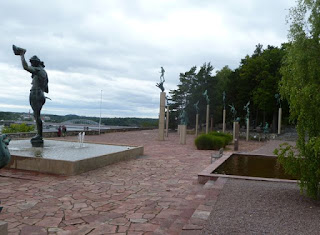
You guys!
Okay, I was too late to review The Light Between Oceans (I was out of town when it opened) but you should still run out and see it. Like, now!
I never read the M. L. Stedman novel, but I was completely entranced by the sophisticated storytelling of Derek Cianfrance's film adaptation. Cianfrance takes his time to tell the story with all the depth of feeling he needs to make an impact.
Michael Fassbender is terrific as Tom, a stoic WWI vet with no family ties who takes a job as lighthouse keeper on a lonely rock off the Australian coast where two oceans meet. After the horrors of war, he's looking forward to the solitude.
 |
| Fassbender and Vikander: back to life. |
The remarkable Alicia Vikander is Isabel, the spirited daughter of Tom's new boss, head of the Commonwealth that employs him. She eases past Tom's defenses and changes his plans; they marry, and she moves into his cottage on the island.
Gradually, we see all the ways that loving her brings Tom back to life.
And the always excellent Rachel Weisz co-stars as Hannah, a woman of the town with sorrows of her own to contend with, whose life and destiny becomes inexorably knotted up with Tom and Isabel's.
 |
| Fassbender and Vikander: to the lighthouse. |
It all revolves around what Art Boy and I call "the film noir moment," when characters make that one regrettable choice that will have wrenching repercussions throughout the rest of the movie, and their lives.
And the pivotal moment here when that choice is made is utterly persuasive. Even as the viewer thinks, "No, no! Don't do it!," we can see exactly what it means to the character advocating so desperately for it, and exactly why the co-conspirator is powerless to say no.
This is movie-making for grown-ups, thoughtfully conceived and beautifully shot.
Why are you still sitting there?











